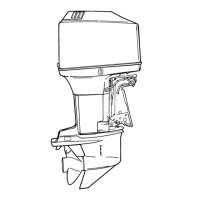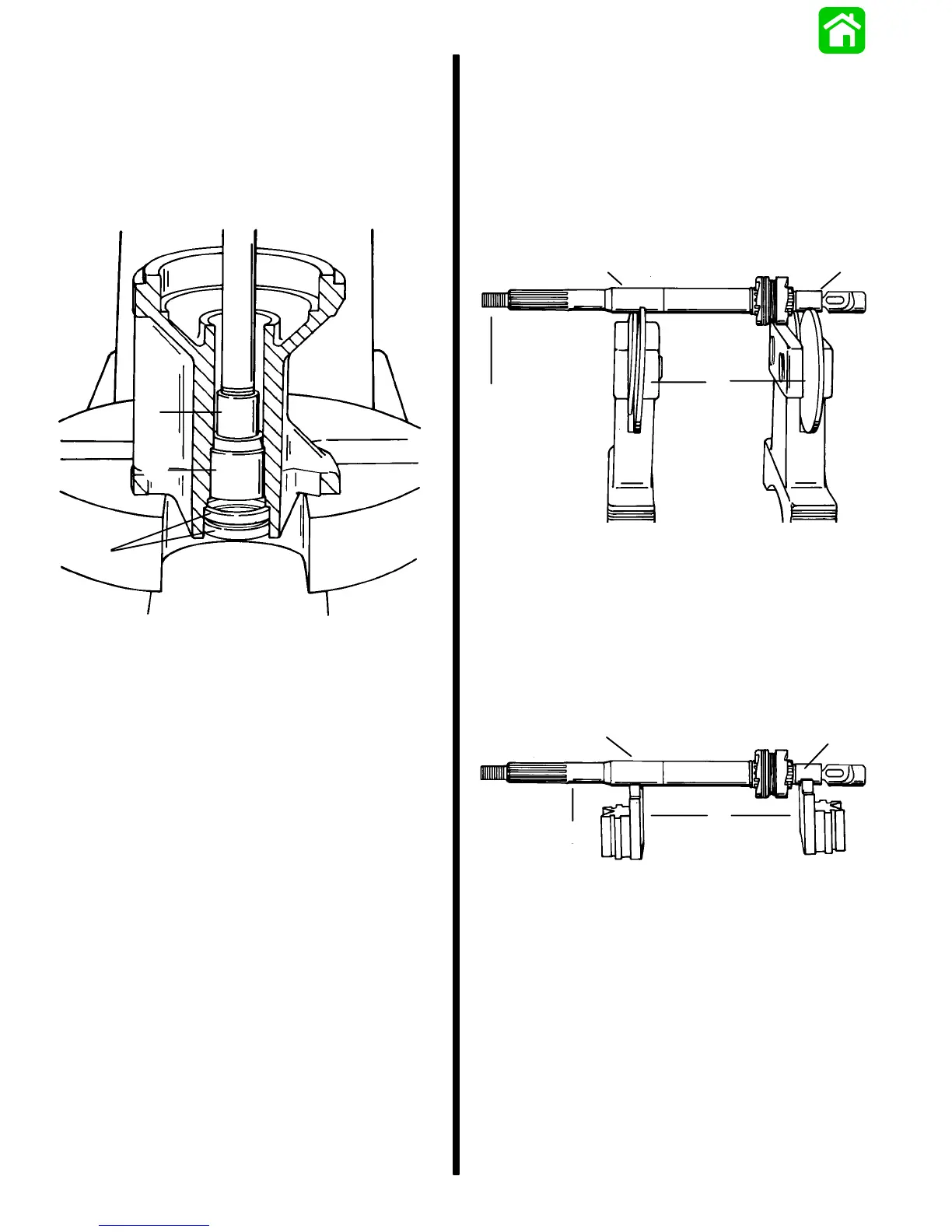6A-32 - LOWER UNIT 90-824052R3 JUNE 2002
4. If inspection of propeller shaft needle bearing
determines that replacement of bearing is
required, use Universal Bearing Removal and
Installation Tool (91-31229A1) to press bearing
and seals out of bearing carrier.
NOTE: Reverse gear must be removed from bearing
carrier before propeller shaft needle bearing can be
removed.
b
c
a
51871
a - Propeller Shaft Needle Bearing
b - Mandrel
c - Oil Seals (Seals and snap ring Must be removed prior to
pressing out bearing on CLE, Sport Master and Torque
Master gearcases)
Propeller Shaft
INSPECTION
1. Clean propeller shaft assembly with solvent and
dry with compressed air.
2. Inspect bearing carrier oil seal surfaces for
grooves. Run fingernail across seal surface to
check for groove. Replace shaft if groove is
found.
3. Visually check bearing surfaces of propeller shaft
for pitting, grooves, scoring, uneven wear or
discoloration (bluish color) from overheating.
Replace shaft and corresponding needle bearing
if any of the above conditions are found. (Bearing
carrier needle bearing contacts propeller shaft
just in front of oil seal surface. Forward gear
bearing contacts propeller shaft in front of sliding
clutch splines.)
4. Inspect propeller shaft splines for wear and/or
corrosion damage.
5. Check propeller shaft for straightness. Use either
method, following:
BALANCE WHEELS
Place propeller shaft on balance wheels. Rotate
propeller shaft and observe propeller end of shaft for
“wobble.” Replace shaft if any “wobble” is observed.
b
a
b
c
51872
a - Balance Wheels
b - Bearing Surfaces
c - Watch for “Wobble”
Position propeller shaft needle bearing surfaces on
“vee” blocks. Mount a dial indicator at front edge of
propeller splines. Rotate propeller shaft. Dial
indicator movement of more than .006” (.152mm) (or
noticeable “wobble”) is reason for replacement.
51872
b
c
a
b
a - “Vee” Blocks
b - Bearing Surfaces
c - Measure with Dial Indicator at this Point
6. Inspect sliding clutch. Check reverse gear and
forward gear clutch “jaws.” Rounded “jaws”
indicate one or more of the following:
a. Improper shift cable adjustment.
b. Improper shift habits of operator(s) (shift from
NEUTRAL to REVERSE gear too slowly).

